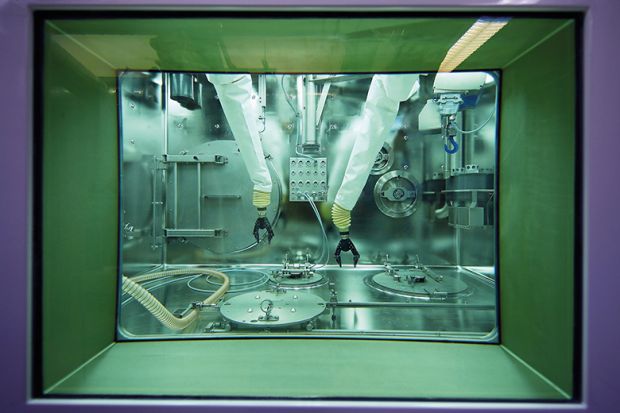Covid-19 looks set to change forever how scientists conduct experiments, with enforced absences from laboratories triggering a dramatic shift to remote experimentation that seems likely to stay even when lockdowns are lifted.
According to a survey of 27 research facilities across Europe – largely laser research centres, particle accelerators and neutron sources – off-site access by scientists has increased “remarkably” and is now the majority way of working at three in 10 facilities.
Seventy per cent of facilities said that even after the pandemic, levels of remote access will remain higher than before.
“This was a process that was already starting before Covid-19,” said Andrew Harrison, chief executive of Diamond Light Source, the UK’s national synchrotron, used to create the ultra-bright light needed to study everything from fossils to viruses. “But Covid-19 has really accelerated it.”
There were “clear advantages” to carrying out experiments remotely, he explained, particularly when scientists were doing “routine, repetitive measurements that lend themselves to automation”.
Instead of individually testing them in person, scientists can now ship hundreds of samples to a facility that are then loaded onto a carousel and checked automatically by a robot. “This is a pipeline,” he said.
This was technically possible before the pandemic, but shutdowns across the continent have spurred scientists to come up with new ways to do experiments at a distance.
“Remote approaches need to be developed,” said Jana Kolar, executive director of the Central European Research Infrastructure Consortium, which carried out the survey. “It will result in so many changes to how we do research.”
The shift has opened up facilities to scientists from further afield who could not afford to come in person, Dr Kolar added, which will “broaden our user base, which will result in higher excellence because of better proposals”. Scientists with mobility problems should also benefit, she said.
As well as enabling a “higher throughput” of experiments, research facilities also said that remote experimentation allows more scientists to take part in each experiment, joining the process online.
However, the switch to remote experimentation appears to have overburdened the instrument scientists who need to remain on-site to help carry out researchers’ instructions from afar. More than eight in 10 facilities reported that these specialists were now overworked. “There is immense pressure,” said Dr Kolar.
Professor Harrison agreed. “You have to put in place safeguards to make sure our guys aren’t working 24 hours a day, however many days a week,” he said. Whether experiments that need “thought, creativity, [and] investment” can be run remotely was also still a “grey area”, he added.
And there are questions over whether moments of scientific serendipity or spontaneity will come as readily when researchers are working online.
Working on-site, “after your experiment you go down to the pub and have a drink with the instrument scientists – or you are there, throughout the whole thing, and you pick up on the little nuances you don’t necessarily see when all you’re looking at is the screen,” Professor Harrison said.
Diamond Light Source would “fundamentally” still prefer to hire scientists who physically lived near the facility, he added.
Register to continue
Why register?
- Registration is free and only takes a moment
- Once registered, you can read 3 articles a month
- Sign up for our newsletter
Subscribe
Or subscribe for unlimited access to:
- Unlimited access to news, views, insights & reviews
- Digital editions
- Digital access to THE’s university and college rankings analysis
Already registered or a current subscriber? Login








